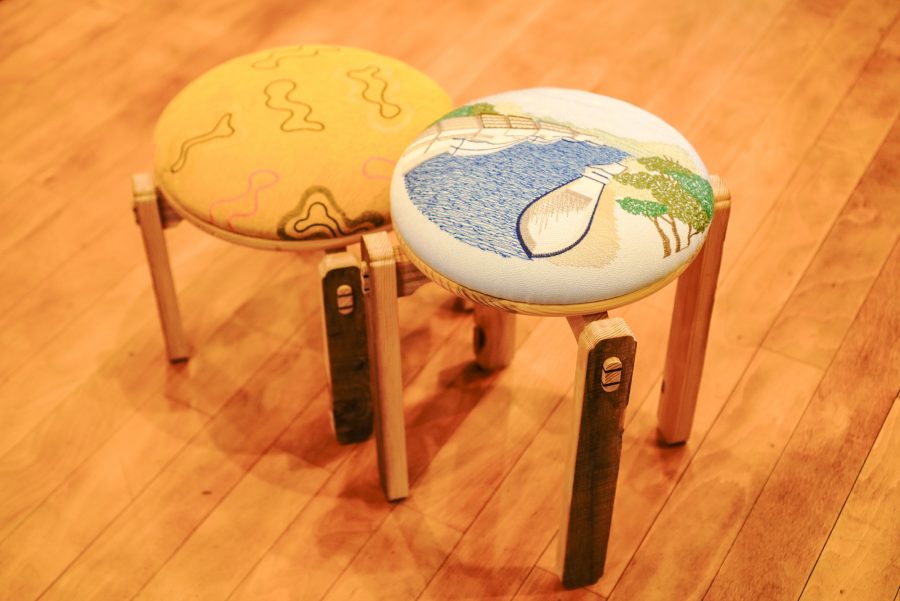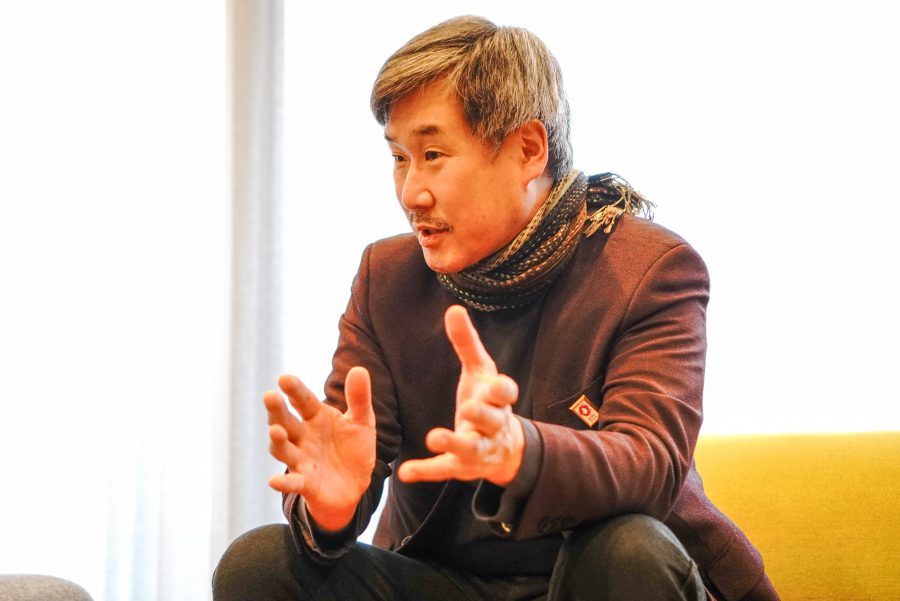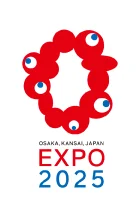
Kitabayashi of Design Week Kyoto Executive Committee, which produces this project, said robustly, “Through the Co-Design Challenge, new relationships were created among enterprises and people.” In order to utilize the craftsmanship of Mitsuba, Ltd., which specializes in embroidery, and Mizokawa Co., Ltd., which specializes in furniture and fixtures, they designed a plan together with Toshihiro Aya of o-lab inc., which is a design company headquartered in Kyoto City, and Takako Tashiro of TAKAKO DESIGN WORKS, which designs textiles, spending over one year, to supply 6 “stools co-created by craftsmen and users for preserving memories” to the venue of the Expo.
They produced two kinds of prototypes that are different in height and diameter. They adopted a low stool with a large seat so that children can sit on it easily and comfortably at the venue of the Expo, which is expected to be visited by many parents with their children. In addition, they focused on the balance of the layout of embroidery, etc. and the detachability of the cushion part from the seat. For the legs assembled with the traditional “wedged mortise and tenon joints,” old wood infused with various memories was used, so they suggest that the materials of demolished houses, furniture, etc. will pass on such memories. Kitabayashi said, “We spend longer time on viewing stools as interior accessories than sitting on them.” They pursued a healing feature that would allow users to change cushions with embroidery representing their precious memories according to season or mood and indulge in reminiscences by viewing the stools instead of sitting on them, as the visitors to the Expo may get interested in these stools and feel like producing them. Kitabayashi talked, “If old wood or unused cloth filled with memories is made beautiful by adding designs representing memories based on the skills and aspirations of craftsmen, users will have the willingness to cherish them.”
In the experience-based event, they put importance on the interaction between visitors to the manufacturing sites and craftsmen. Kitabayashi plans a two-day and one-night event titled “Factory Visit” rather than “Factory Tour” in which a group of about 8 people will not only see the skills of craftsmen, but also visit various spots in the hometown of the craftsmen while closely communicating with them. Kitabayashi said, “Delving into the histories of Maizuru and Tango, I reconfirmed that the people in these towns have engaged in cutting-edge manufacturing and lived with nature. I hope to add meaning to workshops and the visits to Mitsuba, Ltd., which possesses the latest equipment and plenty of craftsmanship, and Mizokawa, which has a deep affection for wood, while learning the background.”
In the “Maizuru Course,” participants will visit Mitsuba, Ltd., manufacturers in the fields of design and fashion, Tane Temple, which was built in the Asuka period and enshrines the Kongorikishi statue, an important cultural asset of Japan, Mikage Shrine, which was established before Christ to worship the ancestor of industry and where sacred water wells up, etc. and then stay at SEW STAY, an accommodation facility operated by a sewing factory. In the “Tango Course,” whose theme is “water, trees, and mountains,” participants will visit Mizokawa, the production site of Tango Chirimen fabric, Ohnaru Burial Mounds, where visitors can appreciate the splendid view of the Sea of Japan, a waterfall, etc. Kitabayashi said with firm determination, “I hope that visitors will realize that the craftsmen in Maizuru and Tango support products familiar to us and engage in manufacturing with their brilliant skills and aspirations. Through such realization, I hope to change the values in the world even a little together with them.

Embroidery depicting “Yoshihara Cove,” a memory of Mr. Yamashita of Mitsuba, Ltd.

Mr. Isao Kitabayashi, Representative Director of Design Week Kyoto Executive Committee
Share this article


